ANGEO - Editorial board (original) (raw)
Editors of this journal work on a purely voluntary basis without remuneration in line with the not-for-profit philosophy of the EGU.
Editorial board
Editors-in-chief
Ioannis A. Daglis
National and Kapodistrian University of Athens
Department of Physics
Ioannis A. Daglis is Professor of Space Physics at the University of Athens and the President of the Hellenic Space Centre. He is an expert in solar-terrestrial coupling processes and space weather; his work is mainly focused on the dynamics of energetic particles and of geospace magnetic storms. He is author or co-author of 130+ refereed scientific papers, with 4500 citations and h-index 35 in the Web of Science (7900 citations and h-index 45 in Google Scholar). He has edited and co-authored 6 textbooks, one of which ("Space Storms and Space Weather Hazards", Springer, 2001) was "recommended teaching material" for Space Sciences by the UN's Office for Outer Space. Prof. Daglis has been a Co-Investigator on three NASA missions (SAC-B, Polar, THEMIS) and two ESA missions (BepiColombo, Proba3); Scientific Representative for the SREM instrument on ESA's Rosetta mission; Full Member of the International Academy of Astronautics (IAA) since 2011; Editor-in-Chief of Annales Geophysicae since 2013; Scientific Discipline Representative to SCOSTEP since 2014; Chair of the Next Scientific Program (NSP) Committee of SCOSTEP (2017-2019); Chair of the South-Eastern Europe Europlanet Society Hub (2019-2022). He led the Horizon2020 project SafeSpace, which advanced space weather nowcasting and forecasting capabilities through the development of a sophisticated model of the Van Allen electron belt and of a prototype space weather forecast service with a target lead time of 2 to 4 days. He also led the ESA project G4G, which delivered key capabilities needed in support of the development and operation of ESA science missions, based on the Geant4 simulation toolkit. He received the NASA Group Achievement Award for his contribution to the Global Geospace Science program and the ESA Individual Achievement Award for his contribution to the Cluster mission.
Ioannis A. Daglis is Professor of Space Physics at the University of Athens and the President of the Hellenic Space Centre. He is an expert in solar-terrestrial coupling processes and space weather; his work is mainly focused on the dynamics of energetic particles and of geospace magnetic storms. He is author or co-author of 130+ refereed scientific papers, with 4500 citations and h-index 35 in the Web of Science (7900 citations and h-index 45 in Google Scholar). He has edited and co-authored 6 textbooks, one of which ("Space Storms and Space Weather Hazards", Springer, 2001) was "recommended teaching material" for Space Sciences by the UN's Office for Outer Space. Prof. Daglis has been a Co-Investigator on three NASA missions (SAC-B, Polar, THEMIS) and two ESA missions (BepiColombo, Proba3); Scientific Representative for the SREM instrument on ESA's Rosetta mission; Full Member of the International Academy of Astronautics (IAA) since 2011; Editor-in-Chief of Annales Geophysicae since 2013; Scientific Discipline Representative to SCOSTEP since 2014; Chair of the Next Scientific Program (NSP) Committee of SCOSTEP (2017-2019); Chair of the South-Eastern Europe Europlanet Society Hub (2019-2022). He led the Horizon2020 project SafeSpace, which advanced space weather nowcasting and forecasting capabilities through the development of a sophisticated model of the Van Allen electron belt and of a prototype space weather forecast service with a target lead time of 2 to 4 days. He also led the ESA project G4G, which delivered key capabilities needed in support of the development and operation of ESA science missions, based on the Geant4 simulation toolkit. He received the NASA Group Achievement Award for his contribution to the Global Geospace Science program and the ESA Individual Achievement Award for his contribution to the Cluster mission.
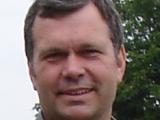
Christoph Jacobi
Leipzig University
Institute for Meteorology
Upper Atmosphere

Ingrid Mann
Topic editors
Oliver Allanson
University of Birmingham
School of Engineering
Space Environment and Radio Engineering
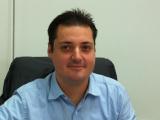
Georgios Balasis
Subject areas
Subject areas
Magnetosphere & space plasma physics
Space weather, climate, habitability, and life in (exo-)planetary context

Jens Berdermann
German Aerospace Center Institute for Solar-Terrestrial Physics
Space Weather Impact
I am recently head of the department “Space Weather Impact” at the DLR Institute for Solar-Terrestrial Physics. I was Involved as project lead for the DLR contributions in several national as well as international projects. My field of expertise is particle and space physics, space weather and data driven physical modelling of the ionosphere.
Subject areas
Subject areas
Earth's ionosphere & aeronomy
Space weather, climate, habitability, and life in (exo-)planetary context
I am recently head of the department “Space Weather Impact” at the DLR Institute for Solar-Terrestrial Physics. I was Involved as project lead for the DLR contributions in several national as well as international projects. My field of expertise is particle and space physics, space weather and data driven physical modelling of the ionosphere.
Dominique Bockelee-Morvan
CNRS/ Observatoire de Paris
LIRA
Formation of the solar system, comet chemistry, space mission, infrared and radio data
Subject areas
Subject areas
Exoplanets systems
Small bodies (dwarf planets, asteroids, comets) to dust
Formation of the solar system, comet chemistry, space mission, infrared and radio data
Claudia Borries
Deutsches Zentrum für Luft und Raumfahrt e.V.
Subject areas
Subject areas
Earth's ionosphere & aeronomy
Dalia Buresova
Institute of Atmospheric Physics, CAS
Ionosphere and Aeronomy
Physics of the ionosphere (particularly magnetic storm effects), solar-terrestrial relations, troposphere-ionosphere-magnetosphere coupling, space weather, ionospheric measurements, ionospheric service and predictions. Topical Editor of the EGU journal Annales Geophysicae (since 2017). Science officer for the EGU ST Ionosphere and Thermosphere section (since 2017). Czech National Representative in the International Space Environment Service (ISES). Head of the ISES Regional Warning Centre Prague. Member of the International Reference Ionosphere (IRI) Task Force Activity and IRI working group member (since 1998). Organizer/co-organizer of the scientific symposium on ionosphere and magnetosphere-ionosphere-troposphere coupling since 2009 (EGU Symposia, Program group – Solar-Terrestrial Sciences - ST). Cooperation with several foreign research institutions (e.g., Ebro Observatory of the Ramon Llull University, Spain and ICTP, Trieste, Italy – several joint projects; ICATE – CONICET, Argentina – joint project, SANSA Space Sciences, South Africa – joint project of the NRF SA; El Arenosillo observatory, Spain; RAL, Chilton UK; NOA, Greece; INGV, Rome; UMLCAR, Lowell, USA; Space Research Centre, Warsaw – joint publications and presentations.
Subject areas
Subject areas
Earth's ionosphere & aeronomy
General or miscellaneous
Physics of the ionosphere (particularly magnetic storm effects), solar-terrestrial relations, troposphere-ionosphere-magnetosphere coupling, space weather, ionospheric measurements, ionospheric service and predictions. Topical Editor of the EGU journal Annales Geophysicae (since 2017). Science officer for the EGU ST Ionosphere and Thermosphere section (since 2017). Czech National Representative in the International Space Environment Service (ISES). Head of the ISES Regional Warning Centre Prague. Member of the International Reference Ionosphere (IRI) Task Force Activity and IRI working group member (since 1998). Organizer/co-organizer of the scientific symposium on ionosphere and magnetosphere-ionosphere-troposphere coupling since 2009 (EGU Symposia, Program group – Solar-Terrestrial Sciences - ST). Cooperation with several foreign research institutions (e.g., Ebro Observatory of the Ramon Llull University, Spain and ICTP, Trieste, Italy – several joint projects; ICATE – CONICET, Argentina – joint project, SANSA Space Sciences, South Africa – joint project of the NRF SA; El Arenosillo observatory, Spain; RAL, Chilton UK; NOA, Greece; INGV, Rome; UMLCAR, Lowell, USA; Space Research Centre, Warsaw – joint publications and presentations.
Ioannis A. Daglis
National and Kapodistrian University of Athens
Department of Physics
Ioannis A. Daglis is Professor of Space Physics at the University of Athens and the President of the Hellenic Space Centre. He is an expert in solar-terrestrial coupling processes and space weather; his work is mainly focused on the dynamics of energetic particles and of geospace magnetic storms. He is author or co-author of 130+ refereed scientific papers, with 4500 citations and h-index 35 in the Web of Science (7900 citations and h-index 45 in Google Scholar). He has edited and co-authored 6 textbooks, one of which ("Space Storms and Space Weather Hazards", Springer, 2001) was "recommended teaching material" for Space Sciences by the UN's Office for Outer Space. Prof. Daglis has been a Co-Investigator on three NASA missions (SAC-B, Polar, THEMIS) and two ESA missions (BepiColombo, Proba3); Scientific Representative for the SREM instrument on ESA's Rosetta mission; Full Member of the International Academy of Astronautics (IAA) since 2011; Editor-in-Chief of Annales Geophysicae since 2013; Scientific Discipline Representative to SCOSTEP since 2014; Chair of the Next Scientific Program (NSP) Committee of SCOSTEP (2017-2019); Chair of the South-Eastern Europe Europlanet Society Hub (2019-2022). He led the Horizon2020 project SafeSpace, which advanced space weather nowcasting and forecasting capabilities through the development of a sophisticated model of the Van Allen electron belt and of a prototype space weather forecast service with a target lead time of 2 to 4 days. He also led the ESA project G4G, which delivered key capabilities needed in support of the development and operation of ESA science missions, based on the Geant4 simulation toolkit. He received the NASA Group Achievement Award for his contribution to the Global Geospace Science program and the ESA Individual Achievement Award for his contribution to the Cluster mission.
Subject areas
Subject areas
Magnetosphere & space plasma physics
Space weather, climate, habitability, and life in (exo-)planetary context
Ioannis A. Daglis is Professor of Space Physics at the University of Athens and the President of the Hellenic Space Centre. He is an expert in solar-terrestrial coupling processes and space weather; his work is mainly focused on the dynamics of energetic particles and of geospace magnetic storms. He is author or co-author of 130+ refereed scientific papers, with 4500 citations and h-index 35 in the Web of Science (7900 citations and h-index 45 in Google Scholar). He has edited and co-authored 6 textbooks, one of which ("Space Storms and Space Weather Hazards", Springer, 2001) was "recommended teaching material" for Space Sciences by the UN's Office for Outer Space. Prof. Daglis has been a Co-Investigator on three NASA missions (SAC-B, Polar, THEMIS) and two ESA missions (BepiColombo, Proba3); Scientific Representative for the SREM instrument on ESA's Rosetta mission; Full Member of the International Academy of Astronautics (IAA) since 2011; Editor-in-Chief of Annales Geophysicae since 2013; Scientific Discipline Representative to SCOSTEP since 2014; Chair of the Next Scientific Program (NSP) Committee of SCOSTEP (2017-2019); Chair of the South-Eastern Europe Europlanet Society Hub (2019-2022). He led the Horizon2020 project SafeSpace, which advanced space weather nowcasting and forecasting capabilities through the development of a sophisticated model of the Van Allen electron belt and of a prototype space weather forecast service with a target lead time of 2 to 4 days. He also led the ESA project G4G, which delivered key capabilities needed in support of the development and operation of ESA science missions, based on the Geant4 simulation toolkit. He received the NASA Group Achievement Award for his contribution to the Global Geospace Science program and the ESA Individual Achievement Award for his contribution to the Cluster mission.
Johan De Keyser
Subject areas
Subject areas
Small bodies (dwarf planets, asteroids, comets) to dust
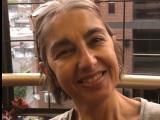
Ana G. Elias
Universidad Nacional de Tucuman (UNT)
Facultad de Ciencias Exactas y Tecnología
Physics
Ana G. Elias received her PhD in Physics from the National University of Tucuman, Argentina, in 1999. She works there as a CONICET Researcher (Consejo Nacional de Investigaciones Cientificas y Tecnicas) and as a Professor of Statistical Physics. Research interests have included: variability of the upper and lower atmosphere, solar and geomagnetic activity, geomagnetism. Her research now is mainly focused in Sun-Earth interaction, Earth’s magnetic field secular variations and reversal scenarios, ionosphere long-term trends and its connection to Earth’s magnetic field and increasing greenhouse gases concentration, and radiowave propagation.
Subject areas
Subject areas
Earth's ionosphere & aeronomy
General or miscellaneous

Ana G. Elias received her PhD in Physics from the National University of Tucuman, Argentina, in 1999. She works there as a CONICET Researcher (Consejo Nacional de Investigaciones Cientificas y Tecnicas) and as a Professor of Statistical Physics. Research interests have included: variability of the upper and lower atmosphere, solar and geomagnetic activity, geomagnetism. Her research now is mainly focused in Sun-Earth interaction, Earth’s magnetic field secular variations and reversal scenarios, ionosphere long-term trends and its connection to Earth’s magnetic field and increasing greenhouse gases concentration, and radiowave propagation.
Bernard Foing
https://www.iafastro.org/biographie/bernard-foing.html
Subject areas
Subject areas
Exoplanets systems
Terrestrial planets systems
https://www.iafastro.org/biographie/bernard-foing.html
Theodore Giannaros
National Observatory of Athens
Institute of Environmental Research and Sustainable Development
Subject areas
Subject areas
Terrestrial atmosphere and its relation to the sun
Matina Gkioulidou
Johns Hopkins University, Applied Physics Laboratory (JHU/APL)
Subject areas
Subject areas
General or miscellaneous
Magnetosphere & space plasma physics
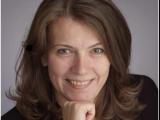
Margit Haberreiter
Subject areas
Subject areas
Space weather, climate, habitability, and life in (exo-)planetary context
Sun & heliosphere

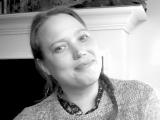
Alexa Halford
NASA Goddard
Heliophysics
I am currently the Lab chief for the ITM lab and a space physics researcher at NASA Goddard Space Flight Center, working with the LAMP, petitSat, Artemis, and SPI missions. As an undergraduate at Augsburg College with Mark Engebretson, I started researching waves in Earth's magnetosphere using ground-based magnetometers in the Arctic and Antarctic. I moved away from waves to focus on geomagnetic storms and substorms during my masters at the University of Colorado Boulder with Dan Baker. Still, I returned to waves with my Ph.D. at the University of Newcastle NSW, Australia, working under Brian Fraser. My Ph.D. thesis was on Electromagnetic Ion Cyclotron (EMIC) waves during the CRRES mission and their relationship to the plasmasphere and radiation belts. During my postdoc at Dartmouth College, I worked on the BARREL mission. I have moved down the field line (from a space perspective) and looked at the population of particles lost due to these interactions and their impact on the ionosphere and upper atmosphere.
Subject areas
Subject areas
Earth's ionosphere & aeronomy
Magnetosphere & space plasma physics
Space weather, climate, habitability, and life in (exo-)planetary context

I am currently the Lab chief for the ITM lab and a space physics researcher at NASA Goddard Space Flight Center, working with the LAMP, petitSat, Artemis, and SPI missions. As an undergraduate at Augsburg College with Mark Engebretson, I started researching waves in Earth's magnetosphere using ground-based magnetometers in the Arctic and Antarctic. I moved away from waves to focus on geomagnetic storms and substorms during my masters at the University of Colorado Boulder with Dan Baker. Still, I returned to waves with my Ph.D. at the University of Newcastle NSW, Australia, working under Brian Fraser. My Ph.D. thesis was on Electromagnetic Ion Cyclotron (EMIC) waves during the CRRES mission and their relationship to the plasmasphere and radiation belts. During my postdoc at Dartmouth College, I worked on the BARREL mission. I have moved down the field line (from a space perspective) and looked at the population of particles lost due to these interactions and their impact on the ionosphere and upper atmosphere.

Keisuke Hosokawa
University of Electro-Communications
Subject areas
Subject areas
Earth's ionosphere & aeronomy
General or miscellaneous


Christoph Jacobi
Leipzig University
Institute for Meteorology
Upper Atmosphere
Subject areas
Subject areas
General or miscellaneous
Small bodies (dwarf planets, asteroids, comets) to dust
Terrestrial atmosphere and its relation to the sun

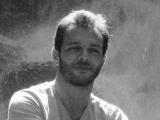
Christos Katsavrias
National and Kapodistrian University of Athens
Physics
Subject areas
Subject areas
Magnetosphere & space plasma physics

Andrew J. Kavanagh
British Antarctic Survey
Space Weather and Atmosphere
Subject areas
Subject areas
General or miscellaneous
Terrestrial atmosphere and its relation to the sun
Elena Kronberg
Ludwig-Maximilians-Universität München
Geophysics
Subject areas
Subject areas
Magnetosphere & space plasma physics
Space weather, climate, habitability, and life in (exo-)planetary context
Wen Li
Dr. Li has deeply engaged in wave-particle interactions in the magnetosphere of Earth and Jupiter using the combination of satellite observation, theory, and simulation.
Subject areas
Subject areas
Magnetosphere & space plasma physics
Dr. Li has deeply engaged in wave-particle interactions in the magnetosphere of Earth and Jupiter using the combination of satellite observation, theory, and simulation.
Ingrid Mann
Anna Milillo
National Institute of Astrophysics
Institute for Space Astrophysics and Planetology
Dr Anna Milillo is Senior Scientist at INAF/IAPS in Rome, Italy, employed as Researcher since 1999. Since 1994 she studied the space environment of the bodies in the Solar System. She is expert of interactions between the ions, radiation and micrometeoroids with magnetospheres, upper atmospheres/exospheres/ surfaces. She is expert in Energetic Neutral Atom (ENA) instrument concept and testing and in science operation strategies. Since 2001, her major field of investigation is Mercury’s environment. She wascoordinator of the Hermean Environment WG and selected as BepiColombo interdisciplinary scientist in 2019, PI of BepiColombo/SERENA particle experiment since 2024 (previously Deputy PI and national responsible), and Co-I of the PHEBUS and SIXS instruments. She was Co-I of flown space particle detector instruments (i.e.: MEX/ASPERA-3 and VEX/ASPERA-4); PI of many proposed particle detectors. Convenor of the ISSI workshop in 2020, lead guest editor of Space Science Review special issue and ISSI book “Surface bounded exospheres and interactions in the inner Solar System” (2024). Presently she is Ann. Geoph. topical editor. In 2024 she is co-author of about 130 peer-reviewed papers.
Subject areas
Subject areas
General or miscellaneous
Magnetosphere & space plasma physics
Dr Anna Milillo is Senior Scientist at INAF/IAPS in Rome, Italy, employed as Researcher since 1999. Since 1994 she studied the space environment of the bodies in the Solar System. She is expert of interactions between the ions, radiation and micrometeoroids with magnetospheres, upper atmospheres/exospheres/ surfaces. She is expert in Energetic Neutral Atom (ENA) instrument concept and testing and in science operation strategies. Since 2001, her major field of investigation is Mercury’s environment. She wascoordinator of the Hermean Environment WG and selected as BepiColombo interdisciplinary scientist in 2019, PI of BepiColombo/SERENA particle experiment since 2024 (previously Deputy PI and national responsible), and Co-I of the PHEBUS and SIXS instruments. She was Co-I of flown space particle detector instruments (i.e.: MEX/ASPERA-3 and VEX/ASPERA-4); PI of many proposed particle detectors. Convenor of the ISSI workshop in 2020, lead guest editor of Space Science Review special issue and ISSI book “Surface bounded exospheres and interactions in the inner Solar System” (2024). Presently she is Ann. Geoph. topical editor. In 2024 she is co-author of about 130 peer-reviewed papers.
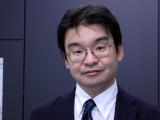
Yoshizumi Miyoshi
Nagoya University
Institute for Space-Earth Environmental Research
Subject areas
Subject areas
General or miscellaneous
Magnetosphere & space plasma physics

Stephen J. Mojzsis
Stephen Mojzsis is a tenured Research Professor at the Konkoly Observatory, Origins Research Institute, HUN-REN Research Centre for Astronomy and Earth Sciences (CSFK) in Budapest, Hungary. He has more than 30 years of research experience studying the geochemical evolution of the Earth and planets using field-, laboratory- and modelling-based methods, to explore the physical and chemical conditions that yield the planets in the Solar System and beyond. Mojzsis’s research achievements and major discoveries use stable-, radiogenic isotope and trace element geochemistry in mineral chemistry and metamorphic petrology. In this realm he documented ancient protoliths and unlocked records of atmosphere-ocean-crust interactions over geologic time. He also explores numerical and analytical modelling of planet formation, accretion, and how records of these thermal processes are contained in minerals. He is the main driver of a new discipline termed Geoastronomy, which applies Earth-derived knowledge to the origin and evolution of cosmochemically Earth-like planets.
Subject areas
Subject areas
Exoplanets systems
Small bodies (dwarf planets, asteroids, comets) to dust
Terrestrial atmosphere and its relation to the sun
Stephen Mojzsis is a tenured Research Professor at the Konkoly Observatory, Origins Research Institute, HUN-REN Research Centre for Astronomy and Earth Sciences (CSFK) in Budapest, Hungary. He has more than 30 years of research experience studying the geochemical evolution of the Earth and planets using field-, laboratory- and modelling-based methods, to explore the physical and chemical conditions that yield the planets in the Solar System and beyond. Mojzsis’s research achievements and major discoveries use stable-, radiogenic isotope and trace element geochemistry in mineral chemistry and metamorphic petrology. In this realm he documented ancient protoliths and unlocked records of atmosphere-ocean-crust interactions over geologic time. He also explores numerical and analytical modelling of planet formation, accretion, and how records of these thermal processes are contained in minerals. He is the main driver of a new discipline termed Geoastronomy, which applies Earth-derived knowledge to the origin and evolution of cosmochemically Earth-like planets.
Christopher Mouikis
University of New Hampshire
EOS
Space Science Center
Subject areas
Subject areas
General or miscellaneous
Magnetosphere & space plasma physics
Tadashi Mukai
Subject areas
Subject areas
Small bodies (dwarf planets, asteroids, comets) to dust
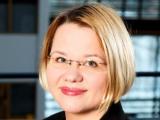
Minna Palmroth
University of Helsinki
also at: Finnish Meteorological Institute
Subject areas
Subject areas
General or miscellaneous
Magnetosphere & space plasma physics

Ernesto Palomba
Subject areas
Subject areas
Terrestrial planets systems
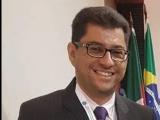
Igo Paulino
Universidade Federal de Campina Grande
Department of Physics
He got his Doctorate in Space Geophysics at National Institute for Space Research (INPE), Brazil in 2012. In 2013 he started to work at Federal University of Campina Grande (UFCG) as Lecturer and Research. He is currently Associate Professor of the department of Physics of the UFCG. He was the president of the Brazilian Society of Space Geophysics and Aeronomy from 2016 to 2020. He has been the Brazilian representative of the Latin American Association of Space Geophysics (ALAGE) since 2016. He is one of the co-chairs of Interdivisional Commission for Developing Countries of International Association for Geomagnetism and Aeronomy (IAGA). He served as guest editor for the special issue "7th Brazilian meeting on space geophysics and aeronomy" published in the Annales Geophysicae from 2019 to 2020. He is one of the conveners of the session "WGII-C/ICMA/SCOSTEP/ICDC: Coupling Processes in the Atmosphere-Ionosphere System" to be presented during the IUGG 2023. He has participated in over 50 international conferences and published 33 scientific articles. He has experience in studying the dynamics of the upper atmosphere and ionosphere using optical and radio measurements and numerical simulations as well.
Subject areas
Subject areas
Earth's ionosphere & aeronomy
Terrestrial atmosphere and its relation to the sun

He got his Doctorate in Space Geophysics at National Institute for Space Research (INPE), Brazil in 2012. In 2013 he started to work at Federal University of Campina Grande (UFCG) as Lecturer and Research. He is currently Associate Professor of the department of Physics of the UFCG. He was the president of the Brazilian Society of Space Geophysics and Aeronomy from 2016 to 2020. He has been the Brazilian representative of the Latin American Association of Space Geophysics (ALAGE) since 2016. He is one of the co-chairs of Interdivisional Commission for Developing Countries of International Association for Geomagnetism and Aeronomy (IAGA). He served as guest editor for the special issue "7th Brazilian meeting on space geophysics and aeronomy" published in the Annales Geophysicae from 2019 to 2020. He is one of the conveners of the session "WGII-C/ICMA/SCOSTEP/ICDC: Coupling Processes in the Atmosphere-Ionosphere System" to be presented during the IUGG 2023. He has participated in over 50 international conferences and published 33 scientific articles. He has experience in studying the dynamics of the upper atmosphere and ionosphere using optical and radio measurements and numerical simulations as well.
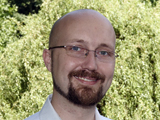
Petr Pisoft
Charles University
Faculty of Mathematics and Physics
Department of Atmospheric Physics
Subject areas
Subject areas
General or miscellaneous
Terrestrial atmosphere and its relation to the sun

Jonathan Rae
Subject areas
Subject areas
Magnetosphere & space plasma physics
Space weather, climate, habitability, and life in (exo-)planetary context
Elias Roussos
Max Planck Institute for Solar System Research (MPS)
Planetary Science Department
Subject areas
Subject areas
General or miscellaneous
Giant planets systems
Magnetosphere & space plasma physics
Ingmar Sandberg
National and Kapodistrian University of Athens
Department of Aerospace Science and Technology
Ingmar received his doctoral degree in Space and Plasma Physics from Uppsala University. During the last decade, he has contributed and managed various R&D projects of European Space Agency related to the calibration of space radiation monitors and to the analysis, modelling and forecasting of space radiation environment. Since 2006 he works in Space Applications & Research Consultancy (SPARC).
Subject areas
Subject areas
Magnetosphere & space plasma physics
Space weather, climate, habitability, and life in (exo-)planetary context
Ingmar received his doctoral degree in Space and Plasma Physics from Uppsala University. During the last decade, he has contributed and managed various R&D projects of European Space Agency related to the calibration of space radiation monitors and to the analysis, modelling and forecasting of space radiation environment. Since 2006 he works in Space Applications & Research Consultancy (SPARC).
Erik Schmölter
German Aerospace Center, DLR e. V.
Institute for Solar-Terrestrial Physics
Subject areas
Subject areas
Earth's ionosphere & aeronomy
Nick Sergis
Office of Space Research and Technology Academy of Athens
Office for Space Research and Technology
Subject areas
Subject areas
General or miscellaneous
Giant planets systems
Magnetosphere & space plasma physics
Gunter Stober
University Bern
Institute of Applied Physics
Microwave Physics
Subject areas
Subject areas
Small bodies (dwarf planets, asteroids, comets) to dust
Terrestrial atmosphere and its relation to the sun
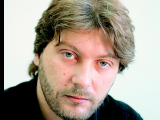
Kleomenis Tsiganis
Aristotle University of Thessaloniki
Department of Physics
Kleomenis Tsiganis (b. Larissa, Greece 1974) received his Diploma in Physics (1996) and his PhD (2002) from the Aristotle University of Thessaloniki (AUTh), under an “IKY” fellowship. He worked as post-doctoral researcher (Marie Curie Fellow) at the Observatoire de Nice (CNRS, France) and as visiting researcher at the Southwest Research Institute (USA). In 2006 he was appointed Lecturer at AUTh, where he now serves as Associate Professor. He is a member of the Hellenic Astronomical Society (elected twice in GC) and the International Astronomical Union (IAU). His main research interests are planetary science, celestial mechanics and dynamical astronomy. His work focuses mainly on the formation and evolution of the solar system, the chaotic dynamics and physical evolution of asteroids, and the dynamics of satellites and space debris. He has co-authored >100 scientific publications (with >5000 citations) and participated in >30 international conferences. He is regular reviewer for major scientific journals and funding agencies. He has lectured for ESA’s Astronauts basic training program (2016) and participated in the definition of Europe’s Road-Map for Astrobiology research (ESF’s Experts Panel member, 2016). He has received several distinctions for his work, including the renaming of an asteroid to “(21775) Tsiganis” by the IAU (2008), the “George Foteinou Prize” by the Academy of Athens (2013) and the international “Paollo Farinella Prize” by the European Planetary Science Congress (2016).
Subject areas
Subject areas
Small bodies (dwarf planets, asteroids, comets) to dust

Kleomenis Tsiganis (b. Larissa, Greece 1974) received his Diploma in Physics (1996) and his PhD (2002) from the Aristotle University of Thessaloniki (AUTh), under an “IKY” fellowship. He worked as post-doctoral researcher (Marie Curie Fellow) at the Observatoire de Nice (CNRS, France) and as visiting researcher at the Southwest Research Institute (USA). In 2006 he was appointed Lecturer at AUTh, where he now serves as Associate Professor. He is a member of the Hellenic Astronomical Society (elected twice in GC) and the International Astronomical Union (IAU). His main research interests are planetary science, celestial mechanics and dynamical astronomy. His work focuses mainly on the formation and evolution of the solar system, the chaotic dynamics and physical evolution of asteroids, and the dynamics of satellites and space debris. He has co-authored >100 scientific publications (with >5000 citations) and participated in >30 international conferences. He is regular reviewer for major scientific journals and funding agencies. He has lectured for ESA’s Astronauts basic training program (2016) and participated in the definition of Europe’s Road-Map for Astrobiology research (ESF’s Experts Panel member, 2016). He has received several distinctions for his work, including the renaming of an asteroid to “(21775) Tsiganis” by the IAU (2008), the “George Foteinou Prize” by the Academy of Athens (2013) and the international “Paollo Farinella Prize” by the European Planetary Science Congress (2016).
Maria Usanova
University of Colorado Boulder
LASP
Subject areas
Subject areas
General or miscellaneous
Magnetosphere & space plasma physics
Space weather, climate, habitability, and life in (exo-)planetary context
Vivien Wendt
Deutsches Zentrum für Luft- und Raumfahrt e.V.
Solar-Terrestrial Coupling Processes
2004 - 2009: German Diploma in Mathematics at Otto-von-Guericke University Magdeburg 2010 - 2014: PhD in Atmospheric physics at Leibniz Institute of Atmospheric Physics in Kühlungsborn (Vertical coupling of the middle atmosphere by planetary Rossby waves using local measurements, global observations and assimilated model data) 2014 - 2018: Postdoc at Leibniz Institute of Atmospheric Physics in Kühlungsborn 2018 - 2020: Postdoc at Potsdam Institute for Climate Impact Research 2020 - today: Senior Researcher at DLR Institute for Solar-Terrestrial Physics
Subject areas
Subject areas
Earth's ionosphere & aeronomy
Terrestrial atmosphere and its relation to the sun
2004 - 2009: German Diploma in Mathematics at Otto-von-Guericke University Magdeburg 2010 - 2014: PhD in Atmospheric physics at Leibniz Institute of Atmospheric Physics in Kühlungsborn (Vertical coupling of the middle atmosphere by planetary Rossby waves using local measurements, global observations and assimilated model data) 2014 - 2018: Postdoc at Leibniz Institute of Atmospheric Physics in Kühlungsborn 2018 - 2020: Postdoc at Potsdam Institute for Climate Impact Research 2020 - today: Senior Researcher at DLR Institute for Solar-Terrestrial Physics
Stephanie C. Werner
PHAB, University of Oslo
Centre for Planetary Habitability
Geosciences
Subject areas
Subject areas
Terrestrial planets systems
Peter Wurz
Universität Bern
Physikalisches Institut
Space Science and Planetology
Subject areas
Subject areas
Exoplanets systems
Small bodies (dwarf planets, asteroids, comets) to dust
Sun & heliosphere